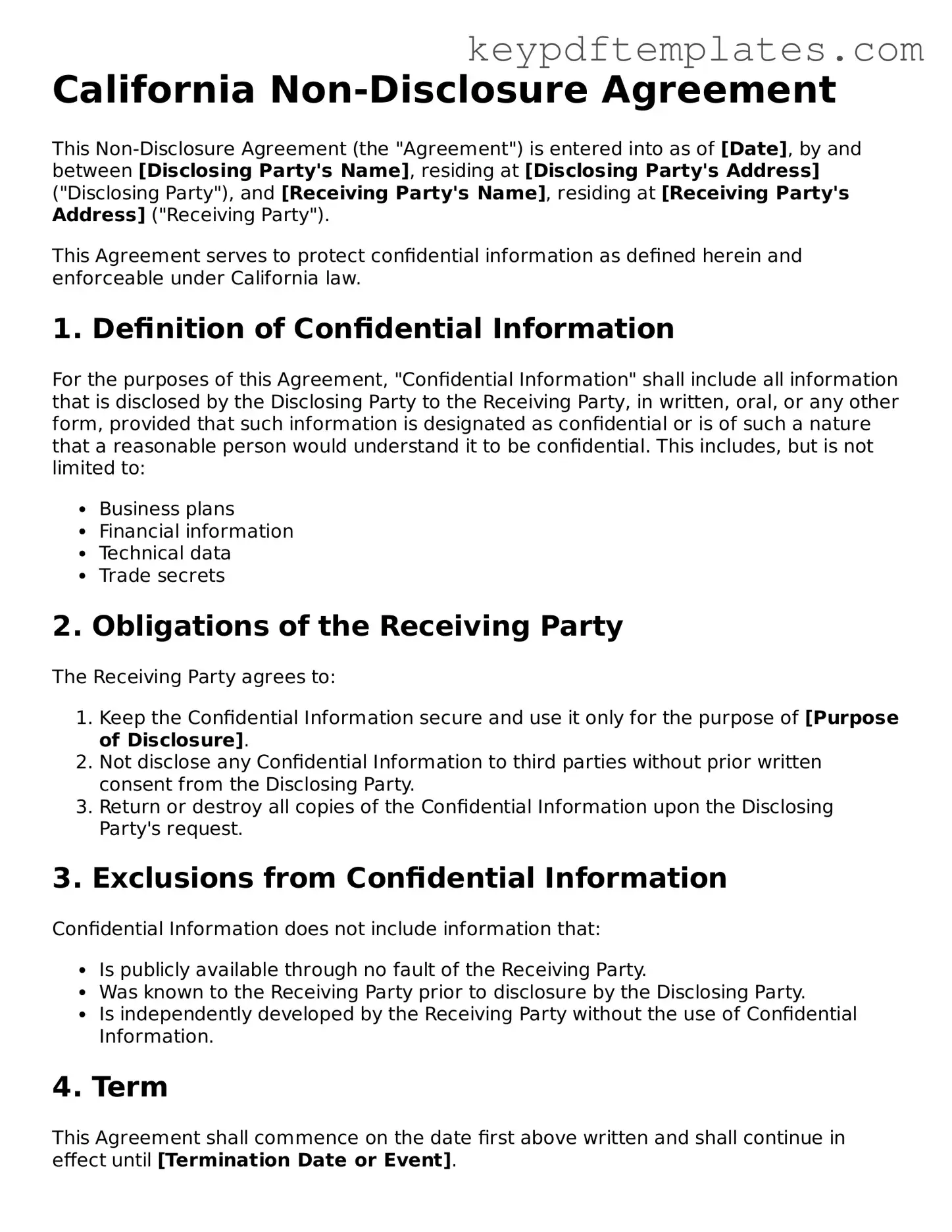Legal Non-disclosure Agreement Document for the State of California
A California Non-disclosure Agreement (NDA) is a legal document that establishes a confidential relationship between parties, ensuring that sensitive information shared during business dealings remains protected. This form is crucial for safeguarding trade secrets, proprietary information, and other confidential data. Understanding its components and implications is essential for anyone engaging in business transactions in California.
Modify Document Online
